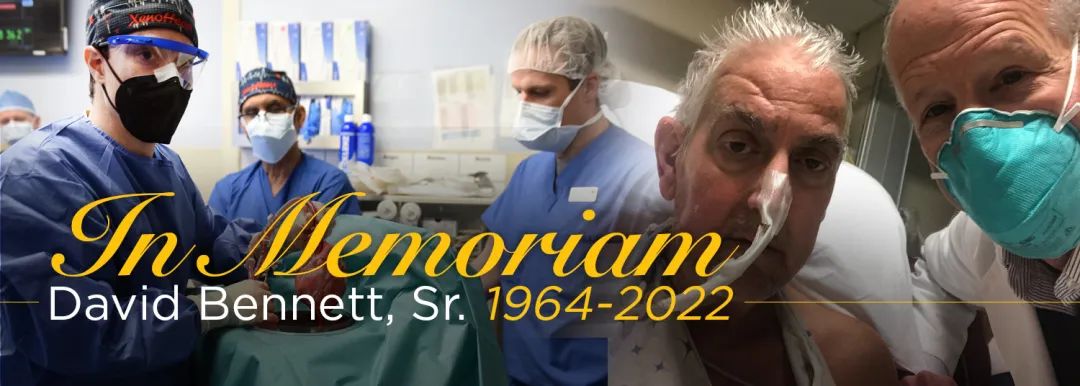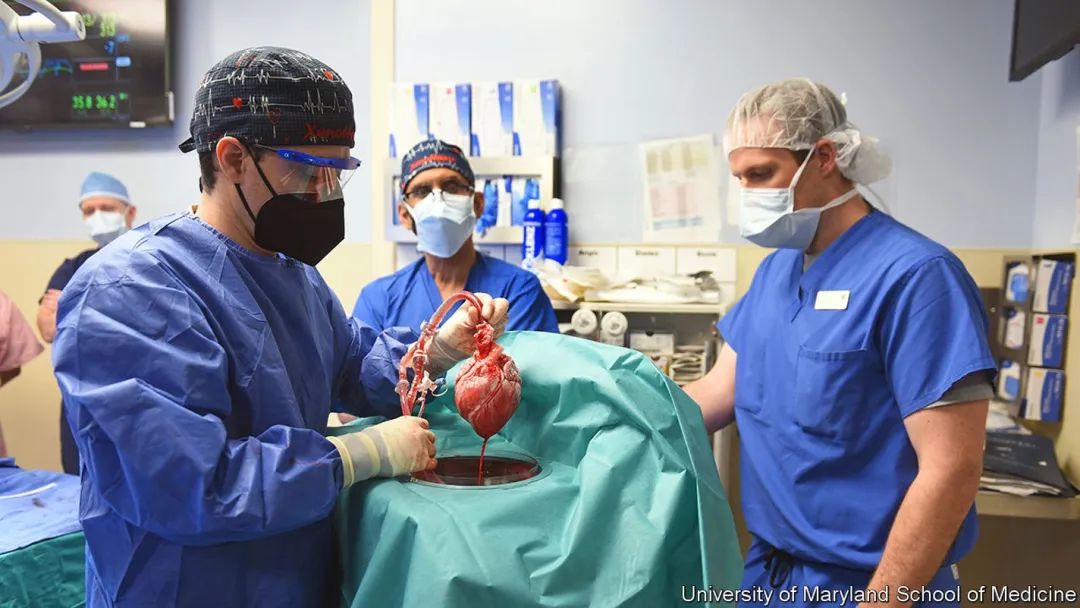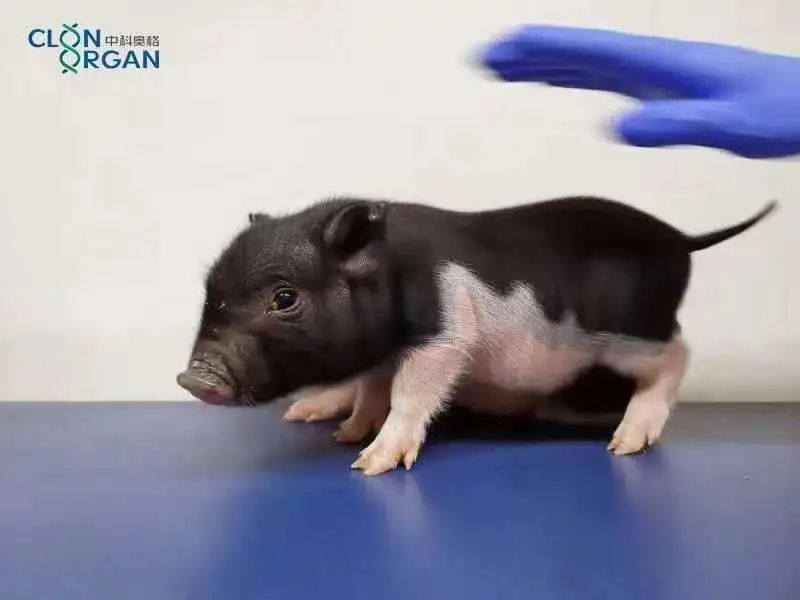Is the pig ready for the human body?
Author:Netease Technology Time:2022.07.19

Follow Mao Shop and Cultural Record Video
Unlock more new things
Author | Wanchen
Edit | Jingyu
Produced | Geek Park
How far is it no longer subject to the future of organ shortage?
Imagine that if you are a patient with a heart disease, the engine that supports your life is about to turn off. Change the heart of another person is the only choice. However, the doctor is regretful to tell you that even if you are listed on the candidate list, you still need 3 years to wait for a heart that can be transplanted. What kind of mood will you be?
In fact, hundreds of thousands of patients are in such a unsolvable dilemma each year. According to data, in China, only 6%of patients who can match the donation organs in time are 6%. Looking at the world, this number cannot be mentioned higher -after all, the number of organs that can be donated is extremely limited.
In order to expand the supply of organs, scientists even thought of a bit of a solution: transplant the organs of animals to the human body. For many people, such an idea is unheard of or even appalling. In fact, this possibility has been explored for decades, although it is not easier to achieve the moon.
However, good news has come.
On January 7, 2022, the 57 -year -old Bannet David underwent the transplantation of pig heart because of heart failure and was not suitable for other treatment methods, and continued the life of nearly two months (59 days). In this regard, industry insiders have expressed exceptional expectations; after all, David also suffers from serious basic diseases and complications before surgery.

On May 9, 2022, the University of Maryland Medical College commemorating the first David Bennet to accept the genetically modified pig heart transplant | Source: official website of the University of Maryland Medical College (UMMC official website)
In the previous half a year, three patients with brain death have been undergoing pig kidney transplantation, and during the observation period, the pig kidney function is operating well.
In the last month, two patients with brain death also underwent the transplantation of the pig heart. During the 72 -hour observation period, there was no super -acute immune exclusion response.
These six cases jointly released a signal: pigs, which are bringing hope to human organs. For researchers and entrepreneurs who have traveled to the dark for decades, this hope is undoubtedly a strong needle. If the technical route of pigs as a human organs is verified, it is no less significant than that of cancer is overwhelmed, and it will become a holy grail in the medical community and continue the life of hundreds of thousands of people each year.
As the protagonist of the transplantation, the donor is also flying to the air.
These small pigs, which look flat, are about one million yuan each, and they are too expensive. Similarly, companies that develop breeding donors have begun to receive more attention, which seems to be promoting pigs as a donor as a human organs, a step forward.
Page

In fact, the transplantation of animals to the technical route like the human body, that is, the transplantation of heterogeneous organs, is the originator of organ transplantation.
Hundreds of years ago, the organs that humans first thought of were animals. At that time, there were no organ donations, and no one's organs could be used for transplantation. However, due to the poor results of animal organs to the human body, they thought of human donations. After years of groping and experiments, the donor's organs, as a donor for organ transplantation, have become the ideal organ transplantation means.
However, the new difficulty is that the number of human organs that can be used is always very limited and supply is short. The heterogeneous organs have to enter people's sight again.
But this return, heterogeneous organ transplantation has undergone nearly a century of exploration. Professor Chen Zhonghua, who has cultivated 40 years in this field, summarized the exploration process as four ice -breaking journey, and the freezing period experienced in the middle was 37, 11 years, and 30 years, respectively. He said that each time he encountered a bottleneck and failure, the exploration was forced to stop until the next opportunity.
Obviously, before the melting of the glacier, heterogeneous organs have been transplanted for 30 years. Professor Chen Zhonghua calls it quiet for 30 years, but this is not the 30 years of silence.
In the 1990s, pigs replaced monkeys and were regarded as the most ideal organ donor. This is because the size of the pig's organs is similar to people, and it is easy to genet, and it also has the advantages of rapid reproduction. Pigs edited by genes can minimize human organs' immune exclusion. The transplantation of heterogeneous organs entered the stage of research and exploration of pigs to become donor. At the same time, the development of biotechnology such as cloning and immunosuppressive agents, once again providing motivation for the ice -breaking of heterogeneous organs.
The baht accumulated until the story that happened in the last year, and finally broke the quietness of 30 years.
In September, November, and December 2021, the two US teams were transplanted for three brain -dead human receptors, and the transplant organs were survived for more than 2 days, and there was no super -acute immune exclusion response.
These three cases are surprising because it is not easy.
Earlier, genetically edited pig organs could only be transplanted to non -human long animals (such as: monkeys) to verify their safety and effectiveness, and did not be allowed to verify clinically. However, although the genes of non -human long animals are similar to humans and humans, they are still very different. This has formed a paradox: even if the pig organ is constantly transplanted to the monkey to experiment, it cannot replace people, and it cannot be verified that the safety and effectiveness of transplanted to human body cannot be clinically clinically clinically.
It was not until Professor Robert Montgometry, New York University that made a suggestion that this paradox turned around. Professor Montgometry believes that a sub -clinical model can be inserted between monkeys and humans, that is, patients with brain death. If the experiment is successful, it will not be so great to enter human experimental disputes. This clever proposal was finally agreed by the US Food and Drug Administration (FDA) in 2019.
The most exciting thing happened on January 7, 2022. David Bennett, a patient with severe heart disease, was not suitable for accepting human heart transplantation. The attending doctor Bartley Griffith applied for special approval of sympathy for sympathy with the US FDA. According to regulations, doctors can resort to experimental therapy after exhausting all the treatment methods. David himself also agreed to undergo the transplantation of gene editing pig hearts.
David received gene editing pig heart | Source: University of Maryland University Medical College

After the operation, David's physical condition was good, and he watched the super bowl game accompanied by the medical staff. In the end, the gene edited pig heart continued for 59 days of David.
At this point, for decades, the gene editing pigs finally accidentally verified the human body for the first time, and continued the life of the human body for nearly two months.
This first time is exciting. In contrast, the first heart transplant surgery that occurred in 1967 for the same species of people had only allowed the patient to survive for 18 days; the heterogeneous transplant in 1984, a little girl named Baby Fae was transplanted by transplantation The heart of 存 only survived for 21 days.
There is no doubt that the David case has taken a big step in the milestone's milestone to promote the transplantation of heterogeneous organs.
Earlier, due to ethical regulations, gene editing pigs have been difficult to verify. This is where this innovative track is more challenging. So when the chance of Bynet David accepted the heart of the pig and survived for two months, the industry and abroad cherished this case, the cause of the death of David has also become a standard for verifying whether the current technical route matures, or even the right or wrong. It has high hopes, hoping that this is a dawn before the success of the pig as a heterogeneous organ. After all, this is the biggest breakthrough in 20 years. If this technical route is successful, it will bring the hope of survival to hundreds of thousands of people.
Finally, on June 22, 2022, the inspection report came.
One of the four major medical magazines "New England Medical Magazine" published a paper for Bannet David to accept gene editing pig hearts. The cause of death has also been disclosed in detail by the attending doctor team for the first time.
The results show that the current technology of heterogeneous transplantation can solve the problem of super -acute immune exclusion between pigs, but the cause of David's heart failure needs to be further explored. It may be infected by pig giant cells, or other unknown reasons. Impact. In other words, although the prospect of this technical route is expected, more clinical cases are needed to test and iterate experience. It is worth noting that the US FDA will recently judge the possibility of clinical experiments.
When David's case brings new hope to the transplantation of heterogeneous organs, as a pigment pig, and its R & D and breeding companies, it has also become the focus of attention.
How to build a million golden pig
It is conceivable that if you want to raise a donor pig that can be transplanted with organs, it is completely different from the meat pigs that are generally used. Focusing on the founder of China Science and Technology, which focuses on research and development and cultivator organ, Pan Dengke told Jike Park that these little pigs are so expensive that no one can go down.

Different from the meat pigs sold for six or seven months, the donor cultivated by Zhongke Og is a small pig. Its organ size is similar to that of the Chinese and is well -proportioned. Due to the consideration of stable and genetic breeding, this pig is also required to have good disease resistance and reproduction. In this way, after the generation of genetic bodies bred from generation to generation breeding iteration, it is possible to eventually become a humanized pig. Putting such a pig organ in the human body can recognize "it is its own" and then accept it. Essence
Because the organs of the donor will be saved in the future, the requirements for the conservation of it -the requirements for cultivating the base are quite harsh. The staff said that it was to be raised like a baby, even if the hotel (guest) or the ICU patients could not live in such a high -end place.
This is especially reflected in the related measures of biological safety. The cultivation base of supply pigs requires the environmental standards for super cleaning foundations. The less the pathogenic microorganisms are, the better. Under the conservation of breeders specializing in animal experiments, all the milk for the donor pigs should be disinfected and sterilized, and the feed formula needs to be traced, and no potential microorganisms are allowed.
Interestingly, the donor also needs to be a caesarean section like a person when giving birth. This is not afraid that it is difficult to produce, but to avoid piglets from passing the birth canal (maybe there are microorganisms). The pig was cut out and was carefully maintained in the conservation box after sterilization.
Since the birth of the pig, the file that tracks its full life cycle has begun to be recorded, and it is monitored 24 hours a day 365 days a day. In this way, what is its genealogy, gene identification records, what diseases have been posted, what condition, and even daily physiological and biochemical indicators.
After that, what kind of genotypes are needed to breed and breed, where the pigs go to test the effect, one generation, two generations, three generations ... constantly iterate and optimize, as a product constantly improved, until it reaches clinical use of clinical use Standards. At present, the GTKO small pigs of China Kohoto have iterated for 11 generations.
Organ Supply -GTKO Finger Mountain Small Pig | Picture Source: Zhongke Og
In fact, the industry has consensus on "which major genes of knocking or inserting", namely: knocking on several specific pig genes to prevent immune exclusion and organ abnormal growth; at the same time, knocking into several specific human transgenic genes , To promote the expression of functional protein.

So why do you need to keep exploring genome and breeding iteration? It iterative genotypes have become the core competitiveness of cultivating donors.
Pan Dengke explained: It is easy to get a good humanized gene pig to the lottery. It is easy to knock or insert which genes. It is not so easy to express a gene. Inheritance, others have a consistent effect, which requires many cross -domain key technologies and clinical experience.
Zhongke Og's technical accumulation is inseparable from the founder Pan Dengke himself. In 2005, Pan Dengke graduated from China Agricultural University. This year, he and the team made the first case of clone pigs in China. Beginning in 2008, he focused on the study of heterogeneous transplantation. In 2018, he decided to build an industrialized platform for heterogeneous organ transplantation and founded Zhongke Og.
An example is that the expression of an American colleague edited a gene is particularly good, but you may not be imitated for six or seven years. If the expression of a gene is not good, then you need to replace other genes to try it. After transforming one or two genes, you must constantly breed and breed until the most ideal gene combination of the expression effect appears. Breeding a species. This is also the ultimate goal of cultivating donor pigs. On the one hand, it is necessary to iterate pigs that can really meet the standards of the people. After the human body accepts gene editing pig organ transplants, at least the same effect as the transplantation effect of receiving human organ donations, or even better. On the other hand, in order to be able to produce supply pigs consistently and reach the stable level of product -level, it can be responding to the market.
Supply pig, take off to the wind
Theoretically, once the genetic types of pigs are determined, they can be factorized and standardized production organs like the production of industrial products. This means that patients can be transplanted at any time and are treated on demand, and are not limited by timing, quantity and quality.
Based on this prospect, some companies have begun to industrially cultivate this kind of donor, from gene editing, cloning cultivation, and breeding, and gradually establish a one -stop cultivation platform for supply pigs.

As early as 2004, the German team invested a lot of funds for the industrial layout of the next 20 years to cultivate genetically modified pigs and heterogeneous islets, hearts and kidneys.
In the United States, the exploration of supply pigs is more active, and many cases of industry -academia cooperation have emerged.
This time it is the industry leader Revivicor that provides pig hearts for Bannet David. Revivicor's predecessor PPL Therapeutics successfully made the world's first clone sheep -Dolly in 1996, with deep technical accumulation. It is worth noting that in 2011, Revivicor was acquired by the American biopharmaceutical giant United therapeutics.
As far as the exploration of heterogeneous transplantation is concerned, in 2001, Revivicor successfully cultivated the Alpha-Gal gene knockout pigs. In 2020, this pig was approved by the FDA and could be used as an alternative plan for human treatment.
Revivicor's GALSAFE pig knock except for human immune exclusion pork influence | Source: Revivicor official website
Another EGNESIS, which was founded in 2015, broke through the heterogeneous transplantation plan in the direction of gene editing. His founder Professor George Church and Dr. Yang Luzheng were from Harvard University. The team hopes to create a safe and compatible pig organ with the CRISPR gene editing tools. In 2019, EGNESIS Co., Ltd. financing was US $ 125 million, and plans to apply for clinical experiments at the end of 2022.
In addition, there are some Chinese companies in this industry. Among them, Hunan Sano, a well -known company in the industry, has been deeply cultivated in this field for 20 years; their ultimate goal is to relieve the lives of diabetic patients through the heterogeneous transplantation of pork islets.

Obviously, entrepreneurs in this track need to be deeply cultivated for a long time, and entrepreneurs who are in it need strong beliefs to persist. After all, there is no time to determine the expected future.
And such beliefs often come from a special sense of empathy. On the one hand, an entrepreneur who tied into this track saw the technical prospects of the donor -to relieve countless life difficulties; on the other hand, many people bet on this track because they could not refuse: they were patients, or they were patients, or they were patients, or they were patients, or they were patients, or There are such patients at home.
Professor Robert Montgometry, which mentioned the Asian clinical model, was a patient with heart disease. Four years ago, he underwent heart transplant surgery, which prompted him to think about heterogeneous transplantation solutions. In recent years, he has been committed to promoting the transplantation of heterogeneous organ: from proposing a sub -clinical model, breaking the paradox that cannot be clinical, to the final practice sub -clinical model (the two cases mentioned earlier mentioned in the body of the brain death patient are Montgometry The team led), he continued to push the donor to enter the clinic.
Indeed, in addition to such a reason, it is difficult to imagine for decades to burn money, just to change the possibility of life. After all, the overall technical route of the heterogeneous transplantation is still early, uncertain, and long blood return cycles. Especially in the past ten years, high investment, long cycle, and uncertainty are projects that investors are unwilling to touch.
Fortunately, this predicament seems to be loose.
In the past year, the clinical experiments of people on the pig organs have allowed more people to see the prospects of donor pigs. More people began to understand this technical route to solve the shortage of organs, and the industry -university -research in related fields has launched more cooperation. This keeps the entrepreneurs from participating in overall optimism. After all, innovation breakthroughs in many fields have been promoted by extreme cases.
At the same time, under the concept of hard technology, many investors began to set their sights on the biomedical track, and heterogeneous transplants were more likely to be seen.
Of course, this track still needs more experience accumulation, but more people participate in letting this matter have a greater win.
Just as THOMAS Starzl, the father of modern transplantation through the three cycles of heterogeneous transplantation, the vision of the life of the father, THOMAS STARZL: History tells us that yesterday thought that it was incredible and barely achieved today, and often it would become conventional operation tomorrow. Welcome to scan the code to follow
Mao Shop and Cultural Record Video


- END -
Jiange County, Sichuan: Gold in Tuli Gold and the People to increase the income and get rich

Sword south of the world can find Fang, and the fragrance of the fields in the mou...
What situations will be held accountable for party group members?

Source: flag micro platform